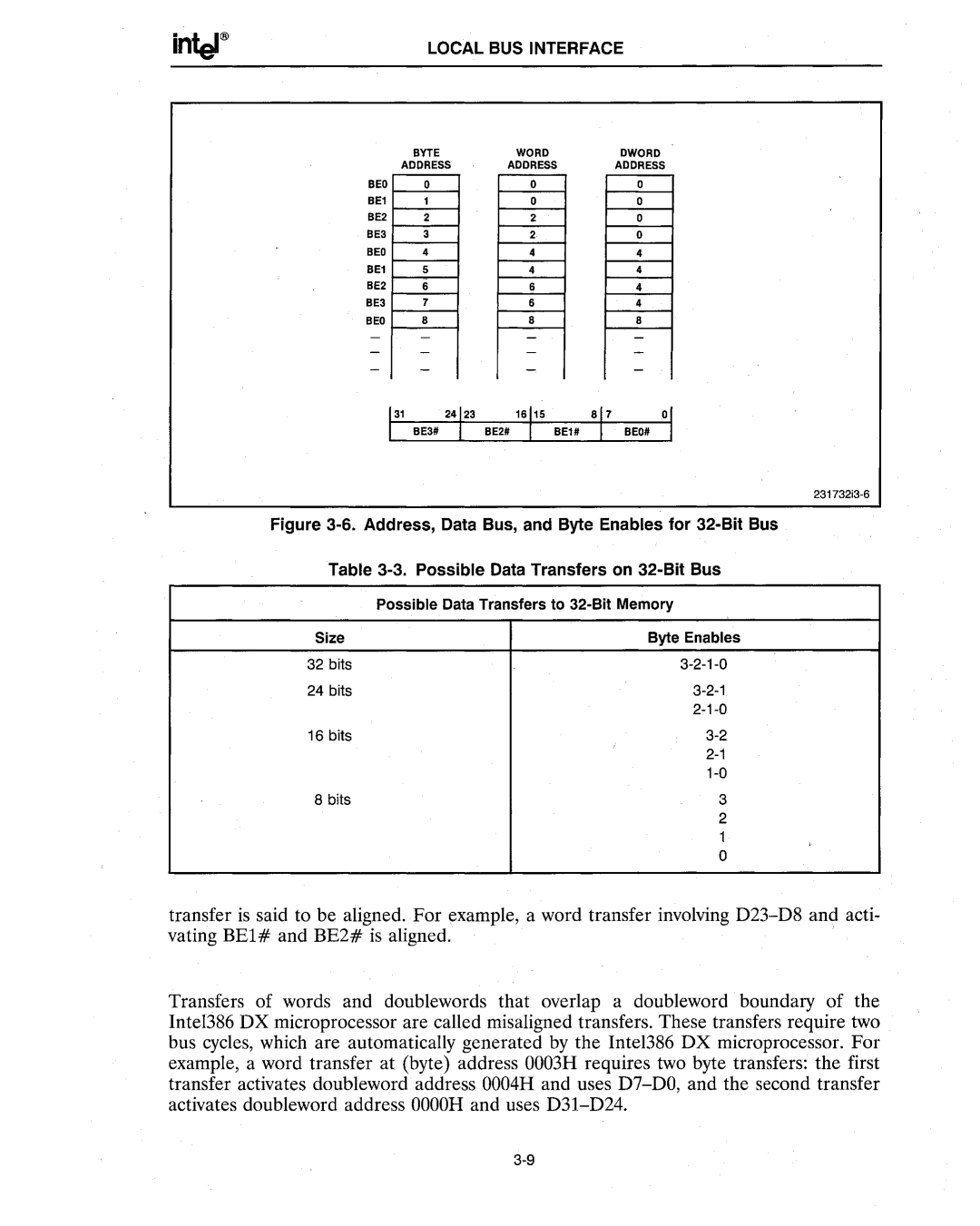
LOCAL BUS INTERFACE
BYTEWORDDWORD
ADDRESSADDRESSADDRESS
BEO | 0 |
| 0 | 0 |
|
BEl | 1 |
| 0 | 0 |
|
BE2 | 2 |
| 2 | 0 |
|
BE3 | 3 |
| 2 | 0 |
|
BEO | 4 |
| 4 | 4 |
|
BEl | 5 |
| 4 | 4 |
|
BE2 | 6 |
| 6 | 4 |
|
BE3 | 7 |
| 6 | 4 |
|
BEO | 8 |
| 8 | 8 |
|
| - |
| - | - |
|
| - |
| - | - |
|
| - |
| - | - |
|
| 131 | 24123 | 16115 | 81 7 | 01 |
| BE3# | BE2# | BE1# | BEO# |
Figure 3-6. Address, Data Bus, and Byte Enables for 32-Bit Bus
Table 3-3. Possible Data Transfers on 32-Bit Bus
| Possible Data Transfers to |
Size | Byte Enables |
32 bits | |
24 bits | |
| |
16 bits | |
| |
| |
8 bits | 3 |
| 2 |
| 1 |
| 0 |
transfer is said to be aligned. For example, a word transfer involving
Transfers of words and doublewords that overlap a doubleword boundary of the Intel386 DX microprocessor are called misaligned transfers. These transfers require two bus cycles, which are automatically generated by the Intel386 DX microprocessor. For example, a word transfer at (byte) address 0003R requires two byte transfers: the first transfer activates doubleword address 0004R and uses
